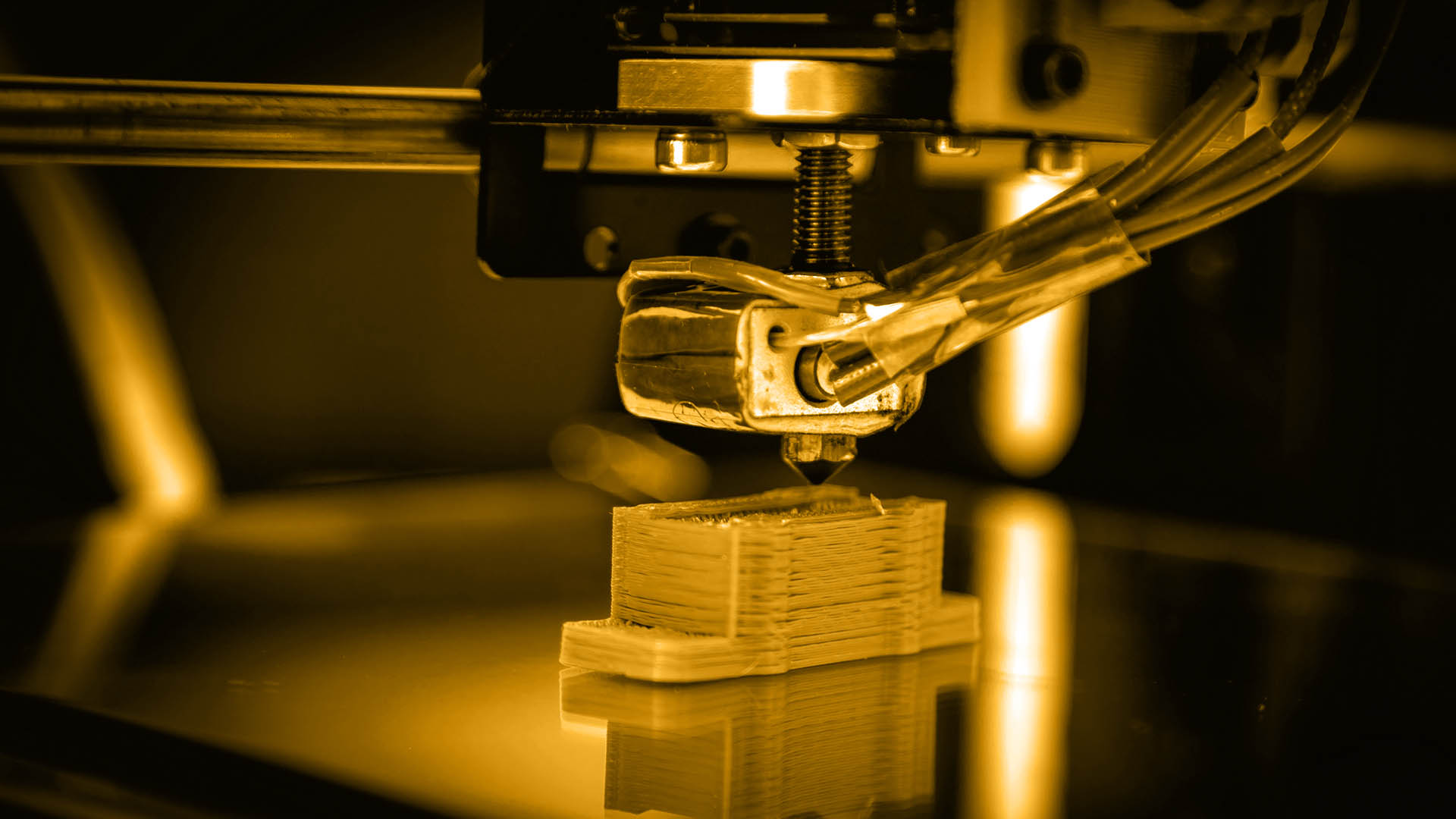Additive manufacturing, also known as industrial 3D printing, is revolutionizing the way manufacturers create products. While other Industry 4.0 technologies assist with logistics and product design, 3D printing is the technology that gets things built. With the ability to print parts on-demand, manufacturers are no longer tied to large minimum order quantities and long lead times. Instead, they can produce what they need when they need it.
Manufacturing companies are experiencing a paradigm shift. In the past, manufacturers designed products and built a prototype. After testing, they decided if they should mass produce the product. Industry 4.0 follows a similar process. But the process isn’t so linear. For example, testing may be continuous throughout the product lifecycle using digital twins. Why wait for a part to be shipped in from 10,000 miles away when you can print the part onsite?
Today, the raw materials used in additive manufacturing go far beyond plastics and polymers. 3D printers can use steel, titanium, gold, ceramics, and more. That jet you flew in recently — it may have had a 3D printed fuel nozzle. 3D printers can even print multiple parts as one part.
Manufacturers are also seeing the great value in the agility of 3D printers. By simply changing the design on a computer, a 3D printer can produce a different iteration of a product. In early 2020, the COVID-19 pandemic shook the world. There were shortages of critical equipment like ventilators. Doctors had to make difficult decisions over which patients could have a ventilator and which could not. 3D printing had the agility necessary to turn on a dime. They could switch from producing consumer or industrial products to medical products within hours, not days or weeks. And when the Ukrainian war zone needed life-saving tourniquet parts, Automation Alley’s very own Project DIAMOnD 3D printing network stepped up to the challenge.
Other Advantages of 3D Printers
With traditional manufacturing, the raw materials do not come in the exact size needed to create the products. Subtracting what’s left over leaves waste. The manufacturer can’t convert this waste into revenues. It’s a cost of doing business.
With 3D printing, there’s virtually no waste. By adding to the product, layer by layer, 3D printing uses only the raw materials necessary for the product. This eliminates the cost of waste. This is one way 3D printing lowers barriers to entry.
The cost to set up 3D printing is low compared to the set-up costs for a mass production factory. With 3D printing, you’re looking at set-up costs of thousands to hundreds of thousands. With traditional manufacturing, your set-up costs are in the millions to billions. Smaller manufacturers can compete with much larger companies. More competition means lower prices.
The costs of running a mass production facility require large production runs. Low volume manufacturing can’t cover the costs of such a facility. 3D printing can produce a profit for more customized items because of its agile nature.
Some experts believe just-in-time (JIT) inventories are a thing of the past. JIT worked great in the stable geopolitical environment of the 1990s and 2000s. But the world economy has destabilized over the past few years. Trade disputes, pandemics, and wars have taken their toll.
With 3D printing, we can store virtual inventories in “warehouses” in the cloud. If you need a part, you download it to your computer network. The 3D printer produces the part for you. Think of it as virtual JIT. It’s much cheaper to store inventory in a data cloud than a physical warehouse.
Why Every Manufacturer Should Have 3D Printing on Its Radar
For mass production facilities, 3D printing can be a lifesaver for producing speciality parts for assembly line tools. For small manufacturers producing low-volume customized parts, 3D printing can replace traditional manufacturing.
With low barriers to entry, 3D printing creates huge opportunities for entrepreneurs to break into low-volume manufacturing. If you’re an existing low-volume manufacturing company, you must adapt. If not, these entrepreneurs using 3D printing will take market share from you. It’s imperative that you understand what 3D printing can and can not do for your business.
Conclusion
3D printing is one of the most important Industry 4.0 technologies. When paired with other digital technologies, it’s a game changer. The agile and iterative nature of 3D printing solves supply chain issues by allowing a move back toward localized industry as opposed to global production.
McKenzie estimates that the pandemic, over just a few months, sped up the adoption of digital technologies by several years. Every manufacturer must seriously consider what 3D printing technology can do for them. Otherwise, they risk being left behind by those who use this technology.
Automation Alley is a World Economic Forum Advanced Manufacturing Hub (AMHUB) for North America and a nonprofit Industry 4.0 knowledge center with a global outlook and a regional focus. We facilitate public-private partnerships by connecting industry, education and government to fuel Michigan's economy.




